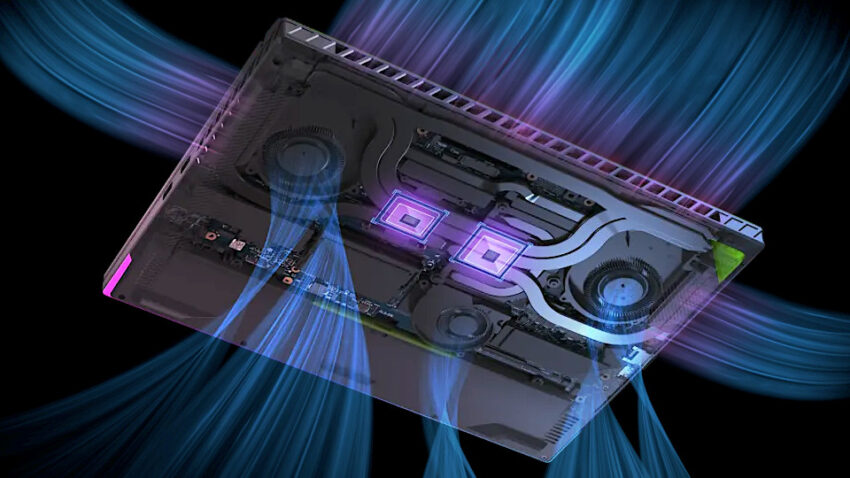Laptops with high end Intel CPUs will run hot by design due to all the boost technology Intel has crammed into the chip so if you are not sure how well your laptop cooling is performing this might help.
Testing baseline cooling performance
In a very short summary, the default design of the Intel mobile CPUs are simply trying to run (boost) the core frequencies as high as possible when under a load. There are various factors involved but as a general rule it’s main functioning is to balance the performance within a thermal range, usually under the max operating temperature of the CPU. And if you go with the Intel spec of 100 Deg C for adaptive boost technology its quite possible for it to run at very high temperatures during use. This is important as if your cooling performance is quite bad the CPU will not boost as high which will result in lower performance when it is operating in boost mode. Also if there is a problem with the cooler itself your CPU will be hot most of the time whilst still trying to boost which it’s not helpful.
A modern trend, undervolting and reducing powerlimits
People often buy gaming laptops and immediately notice higher temperatures and get advised that they are running too hot without fully understanding the boost technology. There will be the suggestion of undervolting the CPU and reducing the Boost powerlimits (usually PL1 and PL2) so that the CPU will essentially run at a lower voltage and have reduced power under load, which leads to a lower boost frequency. This will lower the temperatures especially under a higher load but it fails to acknowledge cooling performance and efficiency. What if the laptop has an issue with the thermal paste causing it to run hot?
So what I’m getting at here is that before attempting any form of tweaking to the CPU, undervolting or adjusting boost clocks and power limits it is critical to ensure the cooling system is actually working and doing a good job.
Baseline cooling performance testing
The idea is to test the CPU cooler when the CPU is at 100% default base clock frequencies. No boost clocks as this will show you how good the laptop cooling performance is at base clock speeds. If the cooling is faulty the CPU will run hot and overheat which is something that should never occur when the CPU is at base clock frequencies.
How to disable the CPU boost clock
Windows 11 does have a power profile setting that you must enable in the Windows Registry. Press on the start menu and type Registry editor to open it. Then find or paste the below in the search box and press enter.
HKEY_LOCAL_MACHINE\SYSTEM\CurrentControlSet\Control\Power\PowerSettings\54533251-82be-4824-96c1-47b60b740d00\be337238-0d82-4146-a960-4f3749d470c
There is a search box just under the menu that you can use for quick access instead of searching each entry / folder.

This will take you to the following section within the registry, next just change the attribute option to 2.

Upon doing that restart (should work without restarting) and when you check the power plan settings you will see a new section labelled “Processor performance boost mode”.
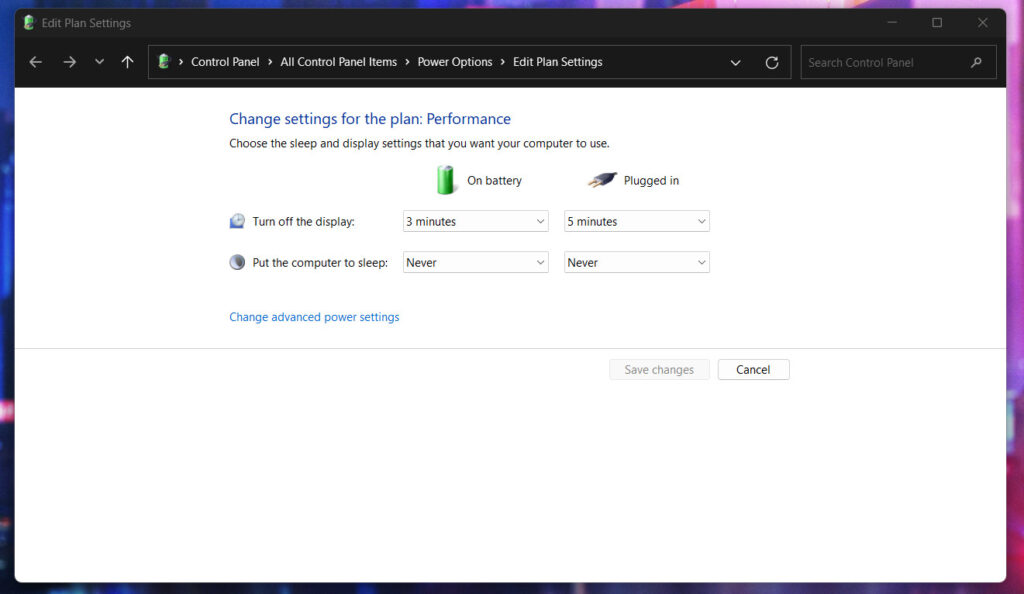
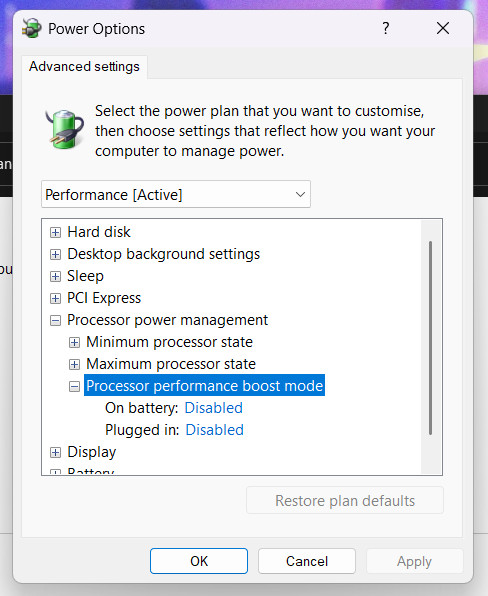
If you set these to disabled your CPU will never run at boost clocks which is good for testing purposes and general fault finding for specific processor related issues, (a CPU running without boost enabled consumes less power, generates less heat under load and runs at a lower voltage).
Testing an i9-14900HX, Boost vs Base Temperatures
This testing is performed using an Asus ROG Strix G16 2024 that has an i9-14900HX CPU, the ASUS software (Armoury Crate) has various profiles, for testing purposes I will use the Turbo profile as that is the default ASUS maximum performance profile. No laptop cooler is being used and room temperature is around 20 Deg C.
Once Human Game Test – Small Boss Zone
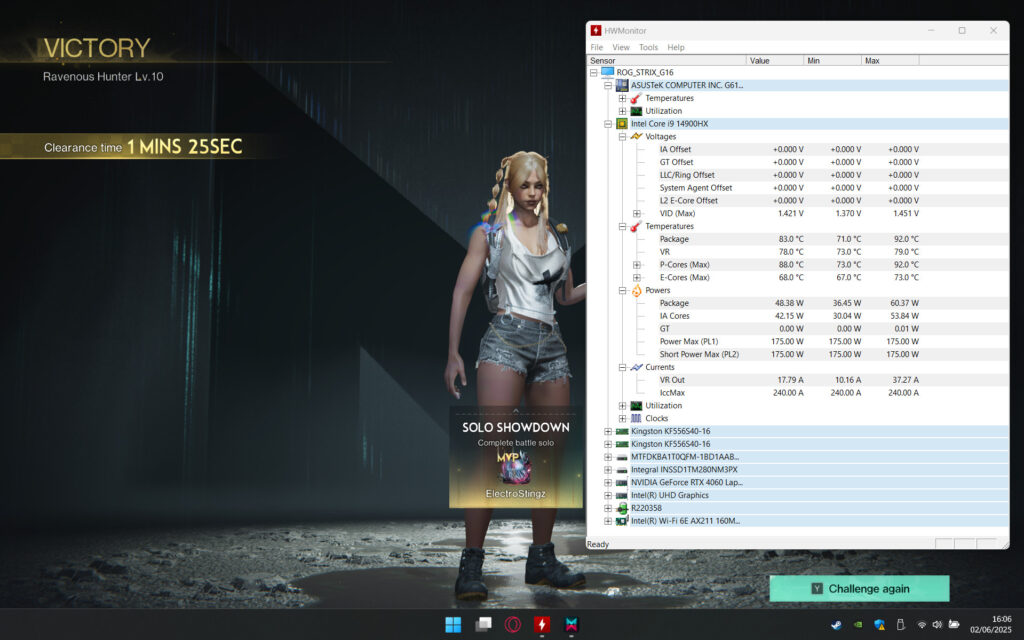
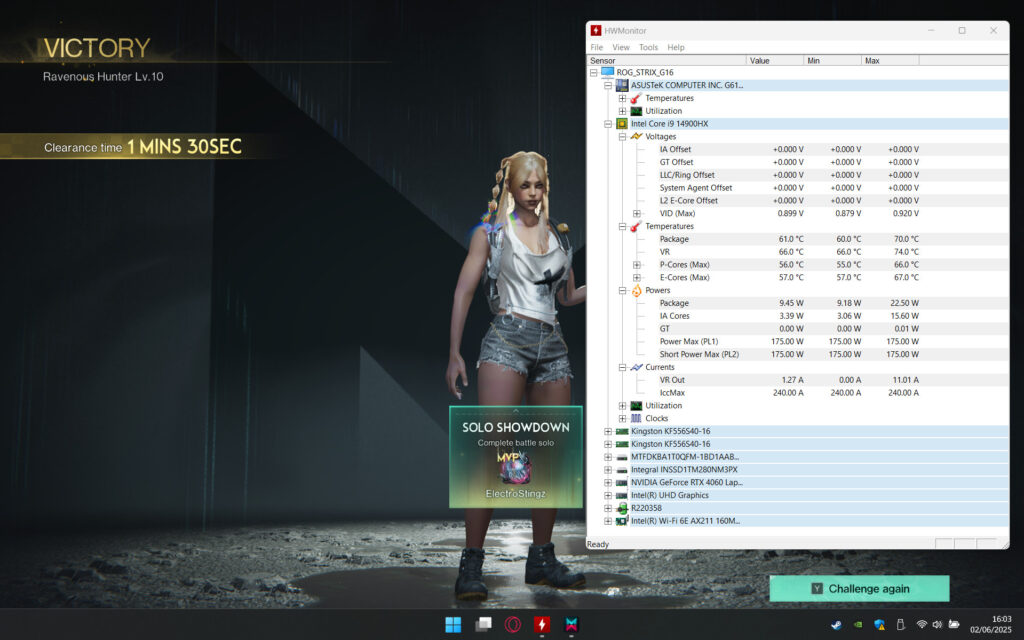
Once Human Game Test – Open World Area
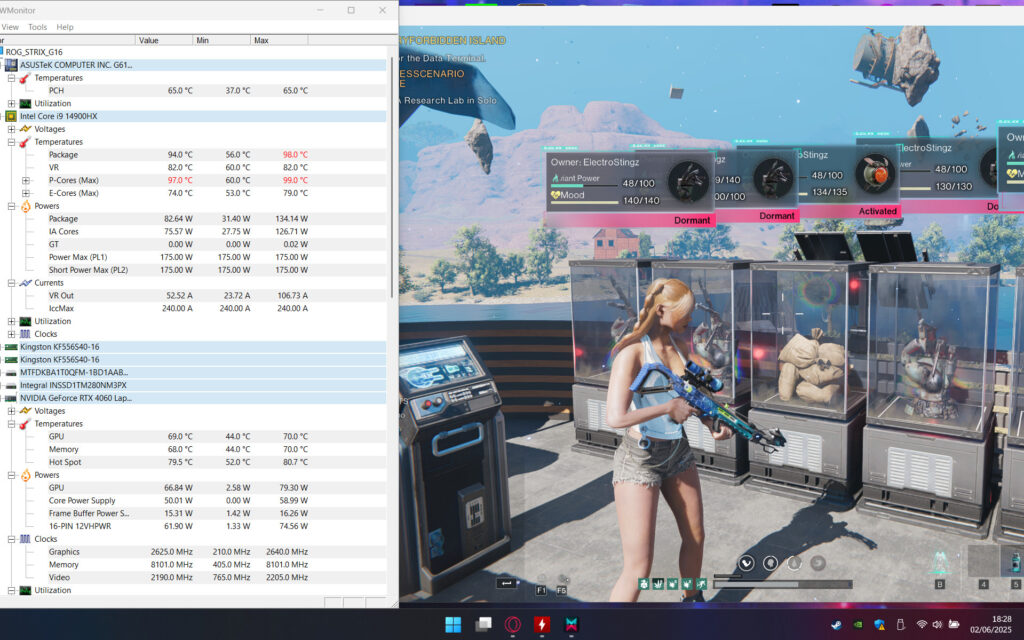
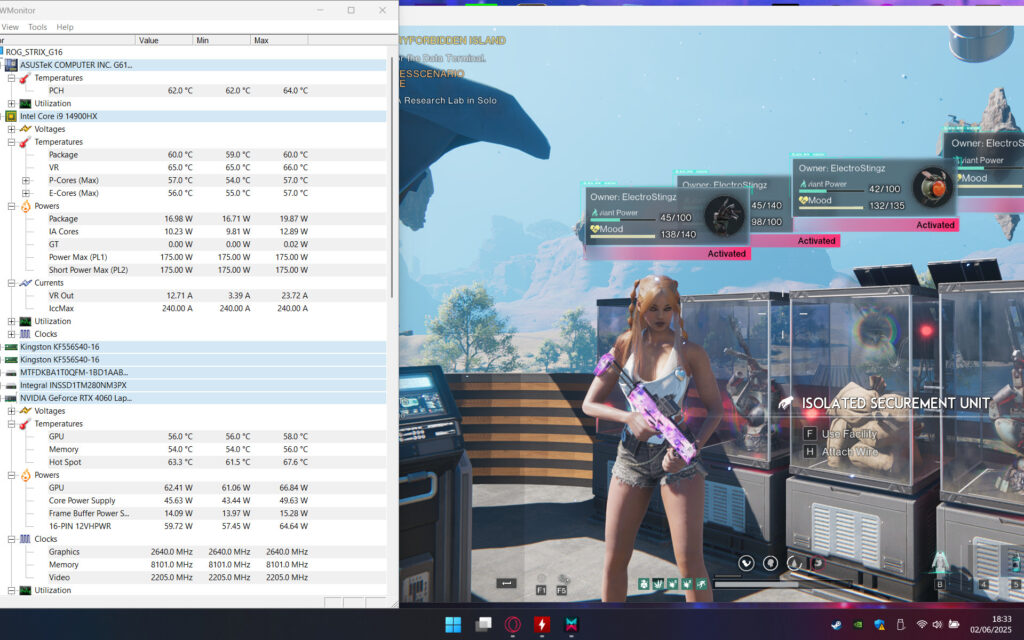
Prime 95 Small FFTs Max Power And Heat Test

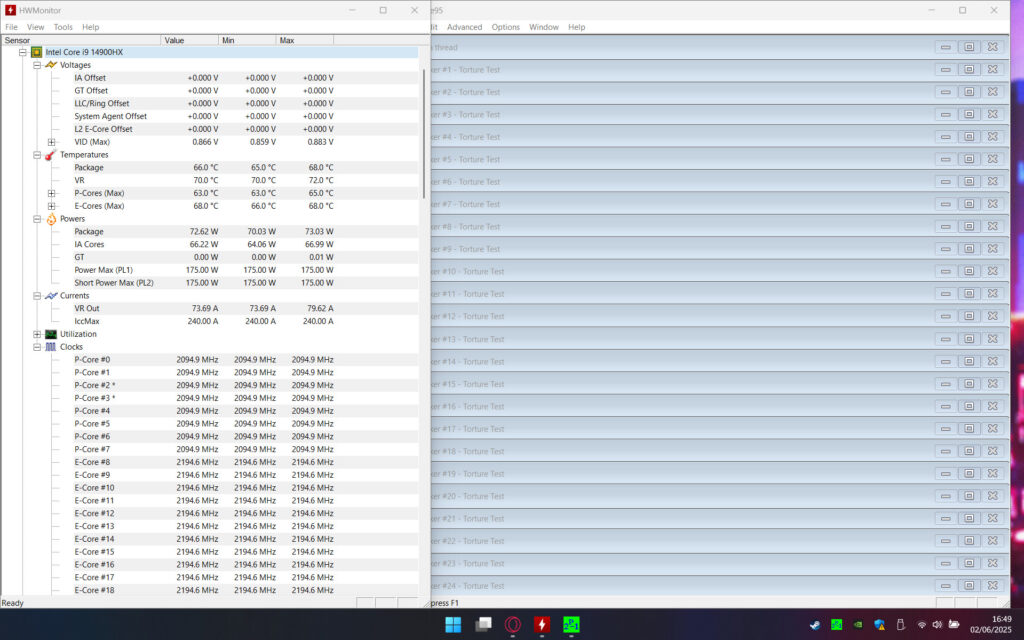
Intel XTU Benchmark Test
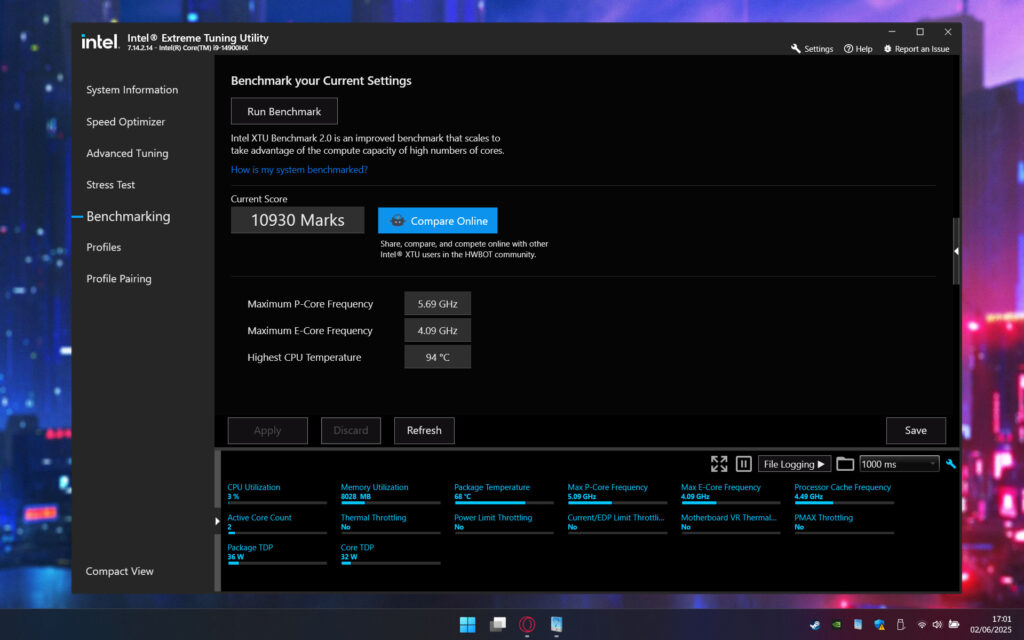
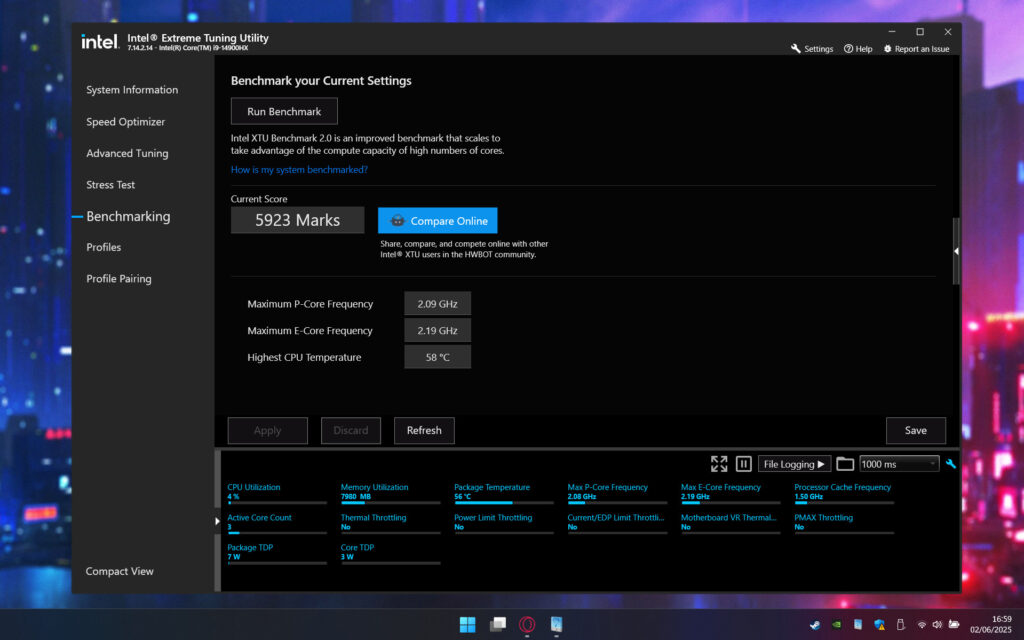
Summary
In these tests the CPU temperatures without boost mode are quite reasonable and show that there is no issue with the cooling performance during gaming or under a high load. The impact of boost mode is clearly seen with temperatures reaching 99 Deg C in the Once Human open world test which highlights how dynamic game loads are on the CPU. (This is the result when all the CPU cores are not fully loaded, the Boost technology can boost 2 cores up to 5.8GHz so you get a massive voltage rise and increased temperature. It is important to note that a high temperature doesn’t instantly mean high workload / fully loaded cores)
Anyway, that’s it for this post so if your laptop is overheating / running hot check the temperatures in a non boost state first to see how good the cooler is performing.
